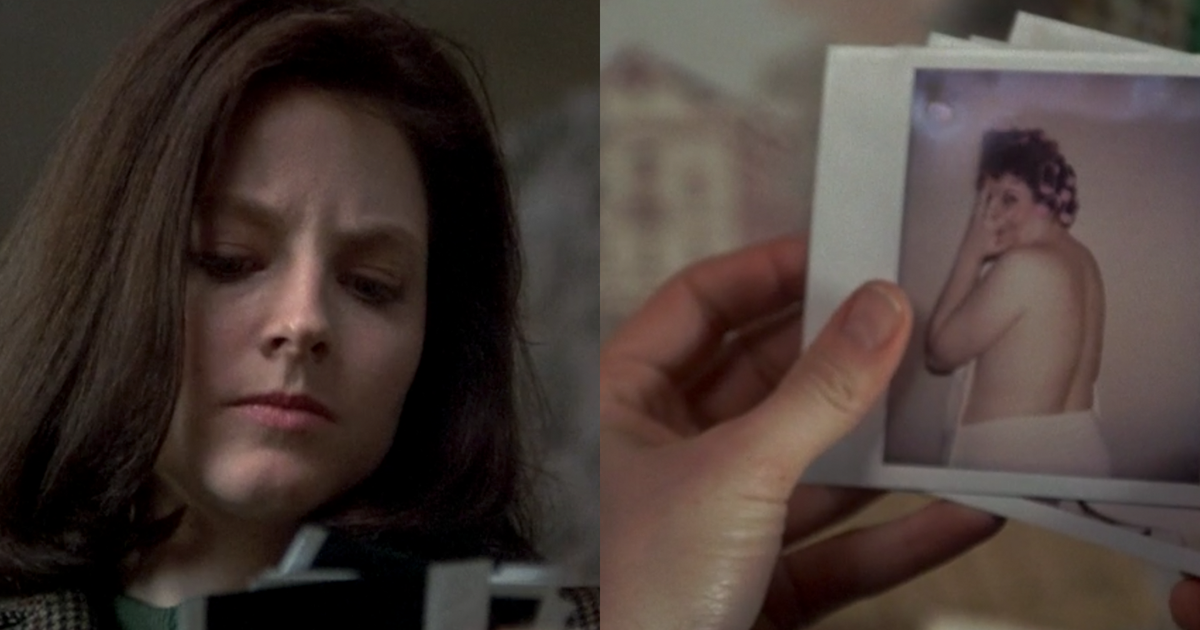
Around five minutes into The Silence of the Lambs, Clarice Starling (played by Jodie Foster) comes upon the FBI’s investigation materials on the serial killer Buffalo Bill (Ted Levine). The camera, acting as her eyes, lands on a headline yelling “BILL SKINS FIFTH,” complete with photos of the five victims. Later, Starling and the audience see photos of their naked bodies.
These victims don’t look like svelte Hollywood starlets. They aren’t thin — by the killer’s design. In the film, they’re called overweight, large, fat, “big through the hips.” They look like me and many people I know.
Seeing a non-thin person on screen is so rare that I’m jarred every time I watch The Silence of the Lambs, which was released 30 years ago this week. Most often, I see bodies like Buffalo Bill’s victims on reality television — some simply existing, others looking to lose weight in shows such as The Biggest Loser, Supersize vs. Superskinny, and many others.
This is perhaps, in part, of what makes The Silence of the Lambs so viscerally terrifying: The women Bill kills makes Lambs more true to life than other crime fiction out there.
Bill seeks out “bigger” women as part of his plan to create a “woman suit.” To achieve this, he kidnaps and starves his victims before murdering them and cutting off pieces of skin to sew together. (There’s been discussion and criticism over Bill potentially being transgender, though Lecter explicitly states in the movie that he isn’t. The upcoming CBS series Clarice will, thankfully, touch upon this aspect of Bill.)
The size of Buffalo Bill’s victims is so imperative to his narrative that it’s the reason behind his nickname. Early in the film, Starling tells Hannibal Lecter (Anthony Hopkins) that the name started out as a joke because Bill likes to “skin his humps,” comparing these women to bison.
Their size is referenced so much throughout the film that the viewer is constantly reminded. In one scene, Lecter asks Starling if Bill’s latest abduction, a senator’s daughter, is “roomy.” The last thing Buffalo Bill says before he attacks said woman is, “Are you about a size 14?” Later, when confronted by Starling about a previous victim he asks, “Was she a great big fat person?”
In 2018, 68 percent of American women wore a size 14 or above. There’s little research on size diversity in American media, but it’s safe to say, as with diversity of race, it’s lacking. The studies that do exist are pretty damning: Of 275 episodes of television in the 1999 – 2000 season, three out of every 100 women characters were obese while one in three were underweight.
Try to think of the last time you saw one let alone multiple plus-sized women in a film or movie. Now try to think of the last time you saw one and weight wasn’t the center of their characterization.
That’s not to say Lambs doesn’t fall into that category; it does, and in a horrific way at that. Bill seeks out his kills precisely because they’re heavier, because they have more skin than thin women. We finally see characters whose bodies are more like ours, and they’re murdered because of it.
We finally see characters whose bodies are more like ours, and they’re murdered because of it.
In the time since Lambs‘s release, we at least have social media to help bridge gaps left by traditional media. But the gaps are still there. Recent research seems to focus on body shaming rather than on representation itself, and on children’s programming rather than that for adults. An example is this look into weight stigmatization in teen television shows. Another instance is a 2017 article from the American Academy of Pediatrics’s journal PEDIATRICS that concluded there’s weight stigmatization in children’s movies.
While it hasn’t been quantified by a journal, we know there’s a dearth of non-thin people in movies and TV — we can easily see it. This makes so many mainstream stories all the more unrealistic. When the majority of the population is above a certain size, showing anything but is a fantasy.
Lambs rips us out of that fantasy into a gruesome realization: It took a fictional serial killer with a penchant for “roomy” women to actually see larger bodies on film. Three decades later, unfortunately, not much has really changed.
